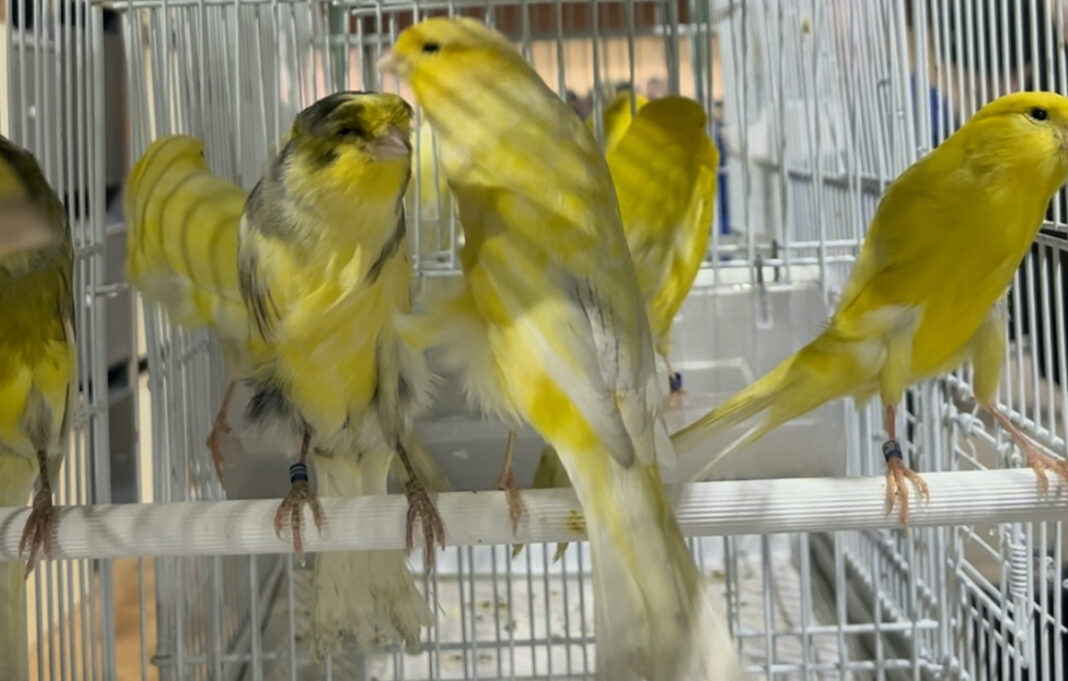Something a bit different – and the rest! Old and rare canary specialist ANDY EARLY introduces an extraordinary type canary which is now finding favour with UK breeders
THE Persian Rasmi is one of the newly recognised breeds of canary. Persia is the old name for Iran, where the breed was developed. According to the breed standard, Rasmis were first kept as song canaries, and then with the addition of some frill canary blood the smooth-feathered and larger-headed birds were kept and selectively bred during the late 1970s.
After the revolution in Iran during 1978, it became possible to import canaries, and the Yorkshire, Lancashire and Spanish Giboso canaries were added to the mix to develop the Rasmi further. The formation of clubs and breeders’ collectives led to standardisation and eventually to the development of a breed standard. Finally came recognition by COM, at the World Show in Turkey in 2021.
I had seen images of the Rasmi on the internet, but was able to study my first ones in the flesh at the National at Stafford last October. I talked very briefly to their breeder, Maj Mira, and wished that we had talked for longer. I also saw Rasmis at the World Show and they again piqued my interest. Wanting to learn more about the breed, when I got home I contacted Maj.
The Rasmi is a long slender canary, standing at 50 degrees to the horizontal. Its minimum size is 21cm or 8¼in, and many birds are a lot longer. I have seen birds that were easily 24cm long – almost 9½in. The other feature that sets this breed apart from other canaries is the tail, which in the best examples is longer than the body, thus accounting – in the very best birds – for more than half the length. In shape it is “fish-tailed”, meaning that it fans out at the end, although the total width should not be greater than that of the shoulders. The body is long and smooth, and the wing carriage is in alignment with the body and covers part of the tail – so it’s a bird with long wings as well as a long tail. In shape the body is elongated and the chest not prominent. The head is round, with no eyebrows, and the neck is distinct, with only a small rise to the shoulders. The thighs are strong to support the bird and they should be visible. When being shown, the bird should be active.
Being such a large breed, Rasmis are shown in the same wire show cage as a Parisian frill. A fault that I have seen on a lot of birds is a tendency to have some curly feather, normally at the top of the chest and neck area, which is probably due to the Giboso genes. Hinged tails are also a fault. All colour types are permitted except for the red factor, although I have only seen them in the standard canary colours.
Maj Mira tells me that Rasmis are no different to any other canary in terms of their general management, and that they breed fairly freely. They require regular baths to try and keep the ends of their tails clean, and when the birds are breeding these are often trimmed. Sometimes the tails of the youngsters are pulled as they are a little bit longer when they regrow.
There are a handful of breeders keeping the Rasmi in the UK and they are shown in the old and rare breeds section. I am sure that once more are bred there will be fanciers who will want to keep them as a secondary breed.
My grateful thanks to Kevin McCallum and Maj Mira for their assistance with this article.
POINTS ALLOCATION
Position: 20
Size: 20
Tail: 20
Body, wings & plumage: 15
Head & neck: 10
Legs: 10
Condition: 5
● Note that the standard states that “the goal is to enlarge the size”, so that the standard itself will need to be updated.
● To learn more about the Rasmi, see the Facebook Persian Canary page.
● To learn more about the various canary breeds recognised by COM, refer to the standards, which are available on the IOA website:
www.ioa-com-uk.org
Find more news and articles like this on the Cage & Aviary Birds website. Subscribe to Cage & Aviary Birds magazine now.


